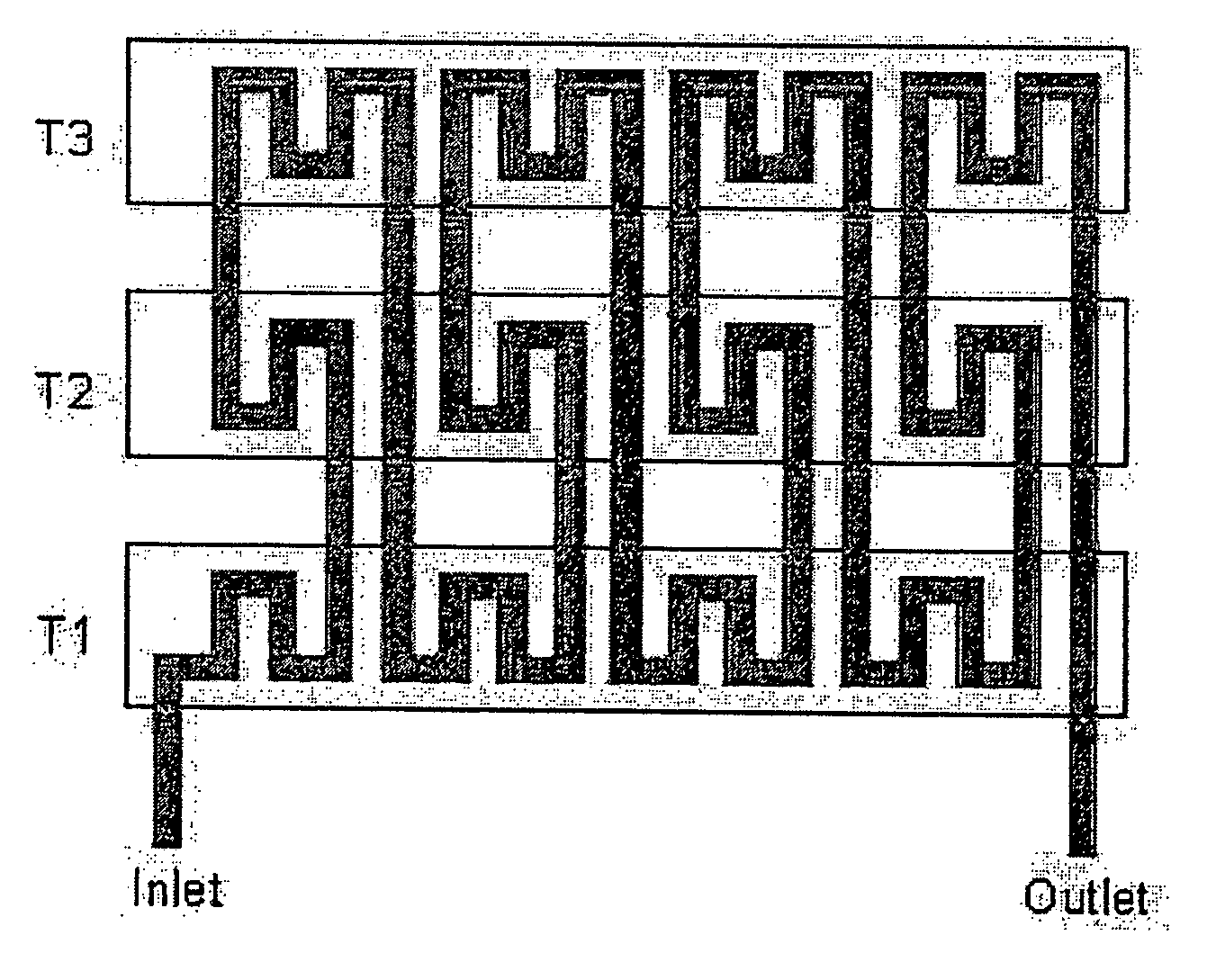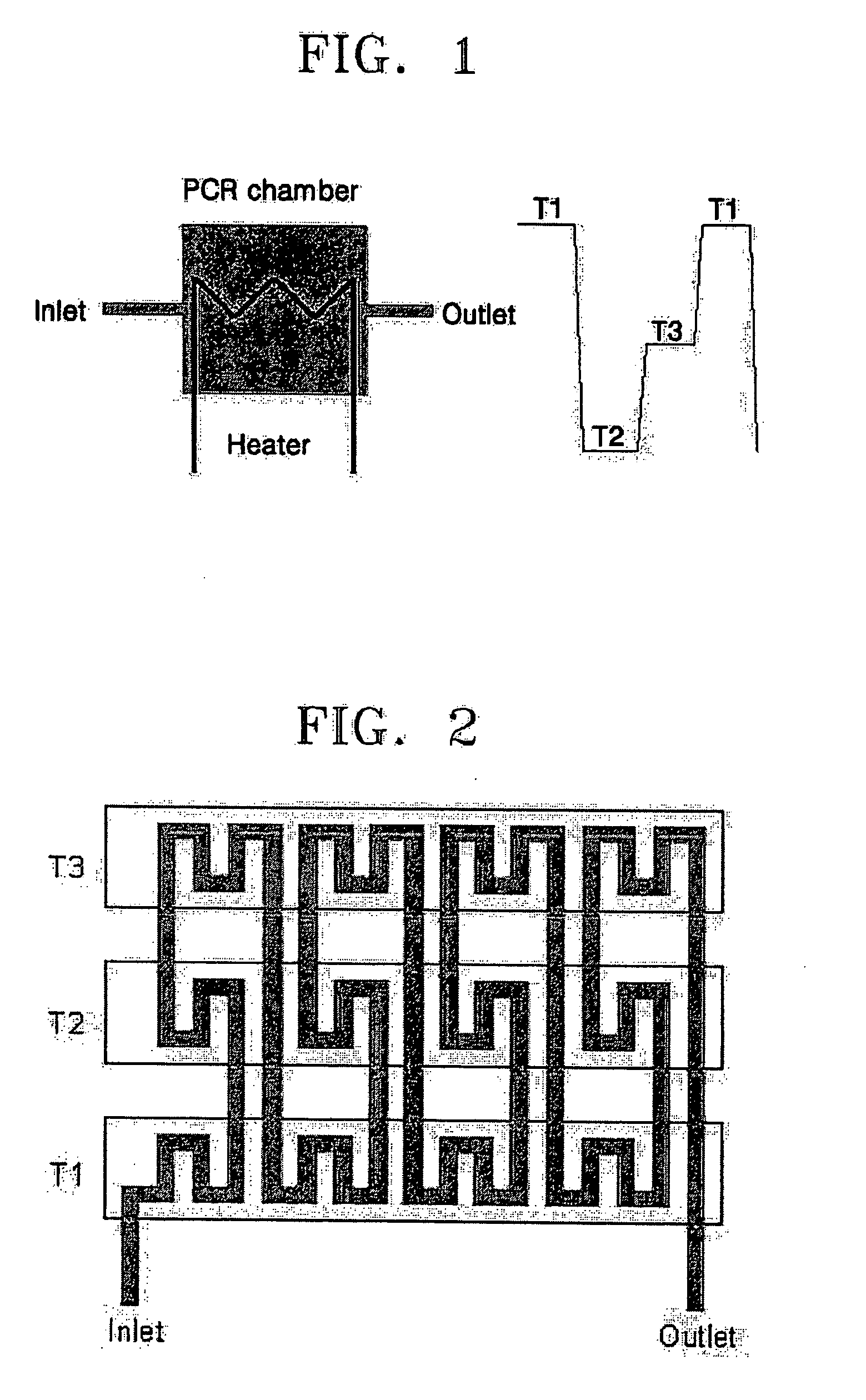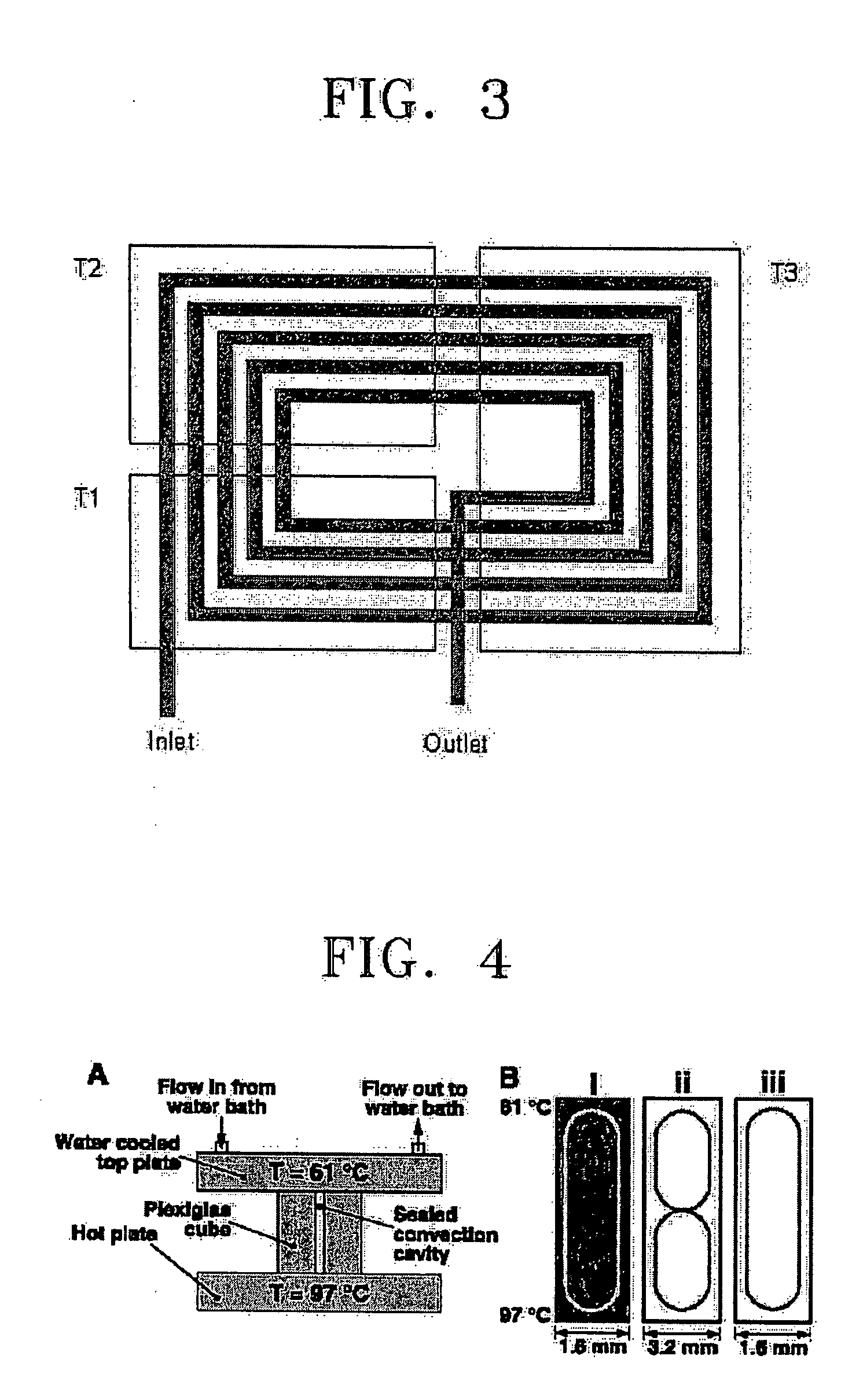Polymer chain reaction apparatus using marangoni convection and polymer chain reaction method using the same
a technology of polymer chain reaction and convection, which is applied in the field of new pcr apparatus, can solve the problems of unavoidable delay in heating and cooling, complicated circuitry to accurately control the temperature, and shortening the length of the flow path after the effect of cooling
- Summary
- Abstract
- Description
- Claims
- Application Information
AI Technical Summary
Benefits of technology
Problems solved by technology
Method used
Image
Examples
example 1
[0085] Thermal-flow fields in the Marangoni PCR chamber have been analyzed using a commercial professional numerical analysis tool, FLOW3D (www.flow3d.com), specialized for a surface flow analysis. In the analysis, it was assumed that the sidewalls were maintained at temperatures of 95° C. and 50° C., respectively. Also, it was assumed that a buffer solution had a thermal conductivity of 0.656 W / m K, a specific heat of 4187 J / Kg K, and a surface tension coefficient of 72 dyne / cm. It was also assumed that the buffer solution had a contact angle of 90° by supposing that a hydrophobic treatment was used. Further, a surface tension coefficient based on the temperature was 0.16 dyne / cm K, corresponding to that of water.
[0086]FIG. 9 illustrates the result of a Marangoni flow analysis in a two-dimensional container having a width of 4 mm. This result is based on the assumption that the fluid is divided into 40×30 grids in x and y directions. In this case, the widt...
example 2
Three-dimensional Analysis
[0087] Similar to the Example 1, thermal-flow fields in the Marangoni PCR chamber have been analyzed by using FLOW3D. It was assumed that the fluid was divided into 25×25×20 grids in x, y, and z directions. Also, it was assumed that the conditions such as boundary conditions and material properties were similar to those of the two-dimensional analysis.
[0088]FIG. 10 illustrates the result of Marangoni flow analysis in a three-dimensional container having a width of 4 mm. Since the length is nearly equal to the width in an actual PCR reactor, it was assumed that the Marangoni flow is generated in a three-dimensional rectangular container having a length of 4 mm, a width of 4 mm, and a height of 2 mm. Similarly, it was assumed that a temperature gradient is generated along only the length. Both the sidewalls along the length of the container were in adiabatic conditions. As a result, it was confirmed that Marangoni convection having a high speed of 4˜5 cm / s ...
example 3
Inkjet Spotter Capable of Marangoni PCR DNA Amplification
[0089] An inkjet spotter having a PCR apparatus according to an embodiment of the present invention is manufactured. FIG. 11 illustrates an exemplary thermal type inkjet spotter according to an embodiment of the present invention. Referring to FIG. 11, the inkjet spotter includes a typical spotter 200 and a Marangoni PCR apparatus 100. The Marangoni PCR apparatus 100 includes a high-temperature sidewall 1 and a low-temperature sidewall 2 erected on a substrate 210, and the spotter 200 is connected to the Marangoni PCR apparatus via a micro-channel 230. The spotter 200 includes a manifold 252 for supplying a DNA solution to a plurality of ejecting chambers, a restrictor 253 serving as a guide to the ejecting chamber, an ejecting chamber 254 for storing the DNA solution before ejecting it, a thin film heater 251 serving as an ejecting driver, and a nozzle 250 for ejecting the amplified DNA solution. The inkjet spotter 200 can b...
PUM
| Property | Measurement | Unit |
|---|---|---|
| Temperature | aaaaa | aaaaa |
| Temperature | aaaaa | aaaaa |
| Temperature | aaaaa | aaaaa |
Abstract
Description
Claims
Application Information
 Login to View More
Login to View More - R&D
- Intellectual Property
- Life Sciences
- Materials
- Tech Scout
- Unparalleled Data Quality
- Higher Quality Content
- 60% Fewer Hallucinations
Browse by: Latest US Patents, China's latest patents, Technical Efficacy Thesaurus, Application Domain, Technology Topic, Popular Technical Reports.
© 2025 PatSnap. All rights reserved.Legal|Privacy policy|Modern Slavery Act Transparency Statement|Sitemap|About US| Contact US: help@patsnap.com



